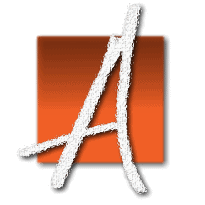[divider style=”solid” color=”#cccccc” opacity=”1″ icon=”fas fa-video” icon_color=”#666666″ icon_size=”25″ placement=”up”]
Voice Over Andy Taylor / dotnotion advertising media & production, Yemen
[divider style=”solid” color=”#cccccc” opacity=”0.5″ icon=”arrow-down” icon_color=”#666666″ icon_size=”15″ placement=”up”]
Emergency Employment and Community Asset Rehabilitation
Voice Talent Andy Taylor narrates this short documetary highlighting the efforts of the Enhanced Rural Resilience in Yemen (ERRY) Joint Programme, funded by EU and implemented by FAO, ILO, WFP, UNDP, and World Food Programme (WFP). ERRY improves food security and creates household incomes in Yemen through cash for work and community asset rehabilitation.
Introduction
Today, the number of suspected cholera cases in Yemen has reached half a million. With about 2000 dead, it is now the largest cholera epidemic in the world. Despite the grim outlook, many are still dedicated to help the community, with many examples of people helping out each other.
Neighbor Helping Neighbor
The EU-funded Enhanced Rural Resilience in Yemen program, is one of few programs that are behind this effort, by assigning community leaders and groups to tackle one crises at a time; ultimately enhancing the self-reliance of rural people and communities, and assisting them to deal with crises, risks and shocks.
Bani Qa’is
Welcome to the Bani Qa’is district in the Hajjah governorate, North of Yemen. One of the activities implemented by WFP-ERRY Joint Programme is to improve the condition of sanitation, specifically the sewage network and cesspools.
The epidemic has hit hard in the area.
So an action plan was devised. Work was carried out to construct a sewage network in the area. New cesspools were dug and covered to provide a healthy and clean environment, and prevent further outbreaks from open sewages.
Another group, Alkhawsh was tasked to improve the quality of water. This is integral in containing the spread of cholera.
The well in the village has long been dirty and inappropriate for drinking. Waste has collected around the well because of the livestock used by villagers that bring water from the well to their houses. By just building a wall around the well, flood and rainwater can be prevented from entering, which could carry contaminated water.
This is to assist all community members to get provisions of clean drinking water. It’s part of restoring community assets that include water points, canals, markets, roads and schools.
Abu Alkhair
Such is the case for the village of Abu Alkhair, where roads have been difficult to access due to the rough and rugged terrain. Villagers had to settle with alternative routes, which takes up more time to travel. Livelihoods have been improved because villagers now can get to work safer and faster.
As for the children: Schools have been built in the village of Abu Alkhair. Previously these children had to study outdoors under the harsh open sun and rain from the shortage of classrooms. So three classrooms were built, along with bathrooms and fences, to ensure that these children were getting an education.
ERRY Joint Programme by the numbers
In the span of two years, 16,065 participants from 2,226 households benefited from the emergency employment component of ERRY Joint Programme, including 18 districts in the four targeted governorates of Hajjah, Abyan, Lahj, and Hodaidah.
[icon_list icon=”fas fa-check”]
- 41 kilometers of road connecting villages to markets were maintained
- 26 sites had harmful bushes removed, natural pastures protected and irrigation canals along with 44 water networks were rehabilitated
- 6 water gateways and water harvesting tanks were also built
- 5 sanitation networks were also rehabilitated while 5 solid waste piles were cleaned
[/icon_list]
The participants now have access to cash, improved household food security, and more stable work since since the crisis, giving hope to the rest of Yemen.
Learn more: United Nations Development Programme in Yemen








